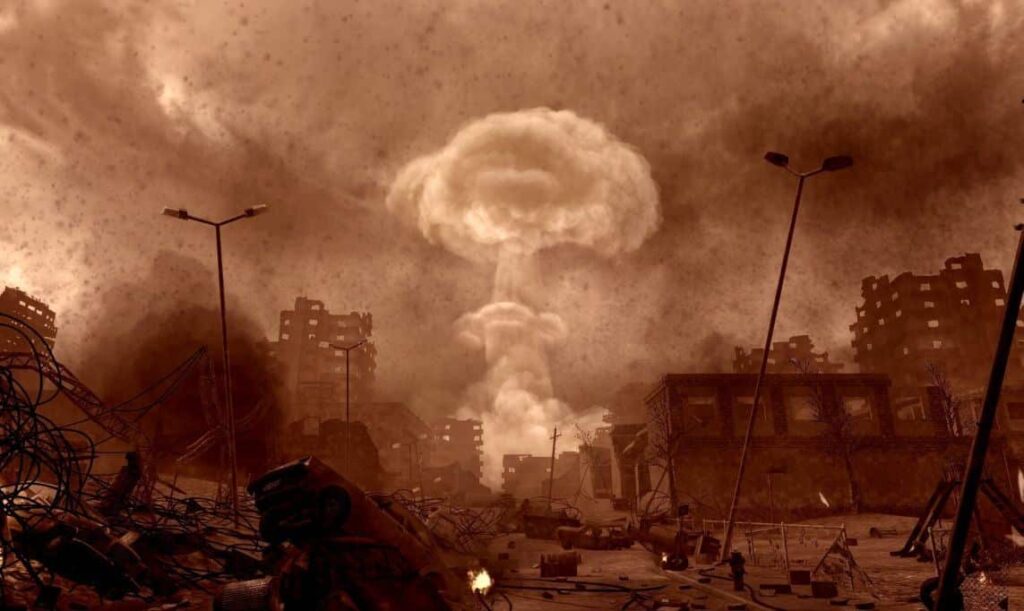
Preventing a Nuclear-Armed Iran: Shifting to Deterrence Is Long Overdue
Washington’s fixation on the war in Ukraine is understandable given the horrors of Russian violence and atrocities. Unfortunately, while Washington is focused on Europe, Iran keeps moving ominously closer to becoming a nuclear weapons state and it is time the United States do more to prevent the Ayatollahs from developing nuclear weapons and setting off a nuclear proliferation chain reaction.
Iran is a signatory to the Nuclear Nonproliferation Treaty (NPT), which requires the regime to forgo the pursuit of nuclear weapons. Iran claims no interest in nuclear weapons, but its actions go far beyond peaceful purposes in defiance of the NPT.
The consequences of a nuclear-armed Iran are terrible for the United States, the Middle East, and existential for the state of Israel. That is why American policy remains consistent in its desire to deny Iran acquisition of nuclear weapons. The question is how best to achieve this policy?
The Biden administration’s answer is diplomacy, apparently believing that Iranian willingness to talk must signal sincerity. Diplomacy has accomplished little more than provide a cover for Iran to advance its nuclear and ballistic missile program. This approach is no longer enough.
The U.S. must immediately shift gears to active deterrence while at the same time developing a plan to disable Iran’s nuclear facilities should deterrence fail. The longer the U.S. delays the deterrence option, the easier it becomes for Iran to accomplish a nuclear breakout and send the region into turmoil.
The Situation
Iran now appears to have in place two of the four pieces needed to field nuclear weapons.
First, Iran needs the ability to enrich uranium to at least 90 percent (weapons-grade) purity. In January 2023, the IAEA found uranium enriched to 84 percent purity at Fordo, demonstrating a capability to easily reach the 90 percent level when desired.
Second, Iran needs a uranium enrichment capacity for multiple weapons. In 2022, Iran began enriching uranium to 60 percent and now has enough to produce five weapons in less than 30 days.
Third, Iran needs a design for a functioning weapon. We do not know which design approach the Iranians are taking, but there are several places to turn for assistance—none are friends of the United States. Iran’s past relationship with North Korea and AQ Khan could expedite this piece.
Fourth, Iran needs effective delivery vehicles. Iran’s ballistic missile program is, like the North Korean program, advancing rapidly and is clearly capable of accurate strikes with the region.
The danger is that Iran is posturing itself for a swift breakout that leaves the United States in a position of too little too late. A nuclear armed Iran is far worse for regional stability than a nuclear armed North Korea.
Why a Nuclear-Armed Iran is a Bad Idea
A nuclear-armed Iran is wholly unacceptable given the costs and risks.
First, while nuclear weapons may allay Iran’s fear of external attack, they would provide it the means to employ nuclear coercion, devastate Israel, and eventually hold the “Great Satan” at risk. NATO’s European member-states will face risk before the United States, making the Iran challenge a problem for them as well.
Second, an Iranian nuclear state would create instant instability and uncertainty stemming from Iranian capabilities, intentions, lack of nuclear bargaining experience, and the dilemma of nuclear control should the regime collapse.
Third, Saudi Arabia and other Middle East states have already let the United States know that a nuclear Iran will undoubtedly lead to nuclear proliferation.
Fourth, Iran could become emboldened to expand terrorism, proxy wars or use non-nuclear weapons of mass destruction.
Fifth, American credibility, whatever is left, may be too limited for the United States to effectively achieve its foreign policy aims. With Saudi Arabia already turning to China, the Middle East will be a very unfriendly place if Iran goes nuclear.
U.S. Policy Options
The United States has three basic options to support its non-proliferation policy.
First, the U.S. can continue with diplomacy, using economic levers to entice Iranian restraint. This is favored by many European capitals, despite Iran’s clear willingness to suffer economically to advance its nuclear weapons program.
Second, the U.S. can employ a deterrence policy option of various threats aimed at influencing Iran to forego weapons acquisition and reverse course. Israel favors deterrence. This option could involve the U.S. military demonstrating its ability to strike Iran’s nuclear facilities; delivering the KC-46 tankers purchased by Israel in 2022; exercising the full JCPOA UN-directed sanctions “snap back” option; and delegitimizing Iran’s reckless leaders.
Third, the U.S. can conduct a preemptive military strike of Iran’s nuclear facilities. This would be taken to deny Iranian nuclear breakout if deterrence fails. The goal would be eliminating the nuclear threat, not regime change.
Conclusions
It is high time the United States shift its approach to ensuring Iran does not develop a nuclear weapon. Moving away from diplomacy to active deterrence while preparing active efforts is the obvious choice. American diplomacy has enabled Iran to further its nuclear ambitions such that it now sits on the precipice of becoming a nuclear power.
We are past due in taking the kind of actions that ensure Iran is deterred. There can be no doubt, the current regime seeks nuclear weapons and is a pariah in the international system. Inaction and empty words only delay the inevitable and that day is getting closer and closer.
Jonathan Trexel, Ph.D. is a graduate faculty member with Missouri State University’s School of Defense and Strategic Studies. Adam Lowther, Ph.D. is Vice President for Research at the National Institute for Deterrence Studies and the host of ANWA DC’s NucleCast. The views expressed in this article are the authors’ own.
This article was originally published by RealClearDefense and made available via RealClearWire.


